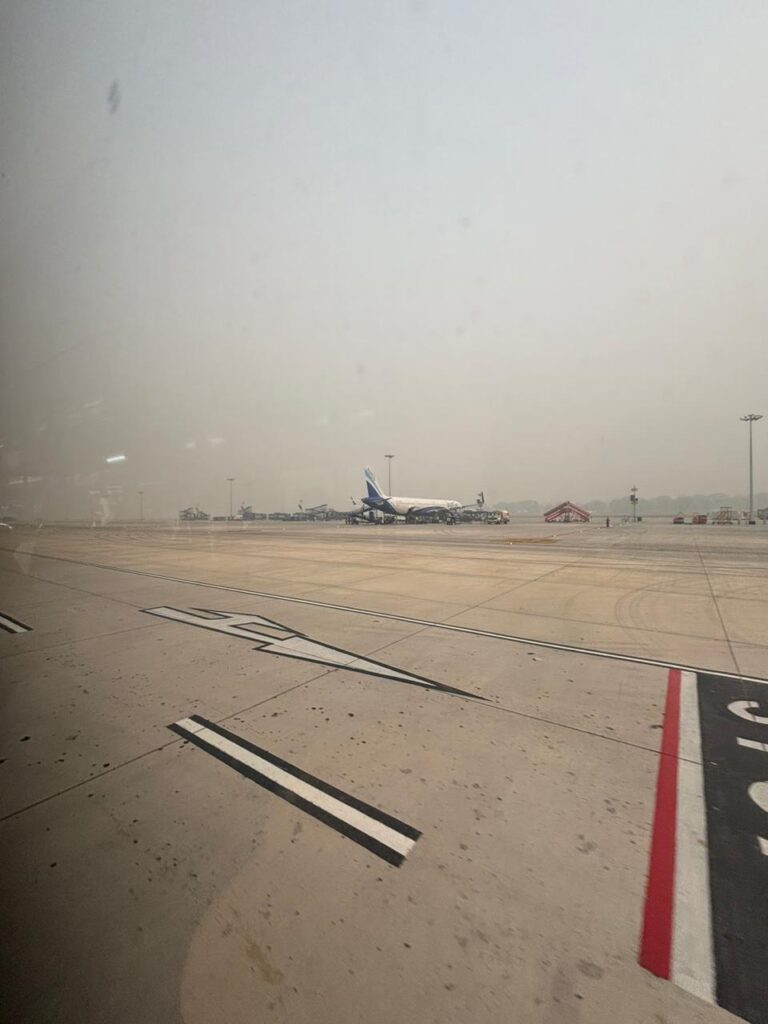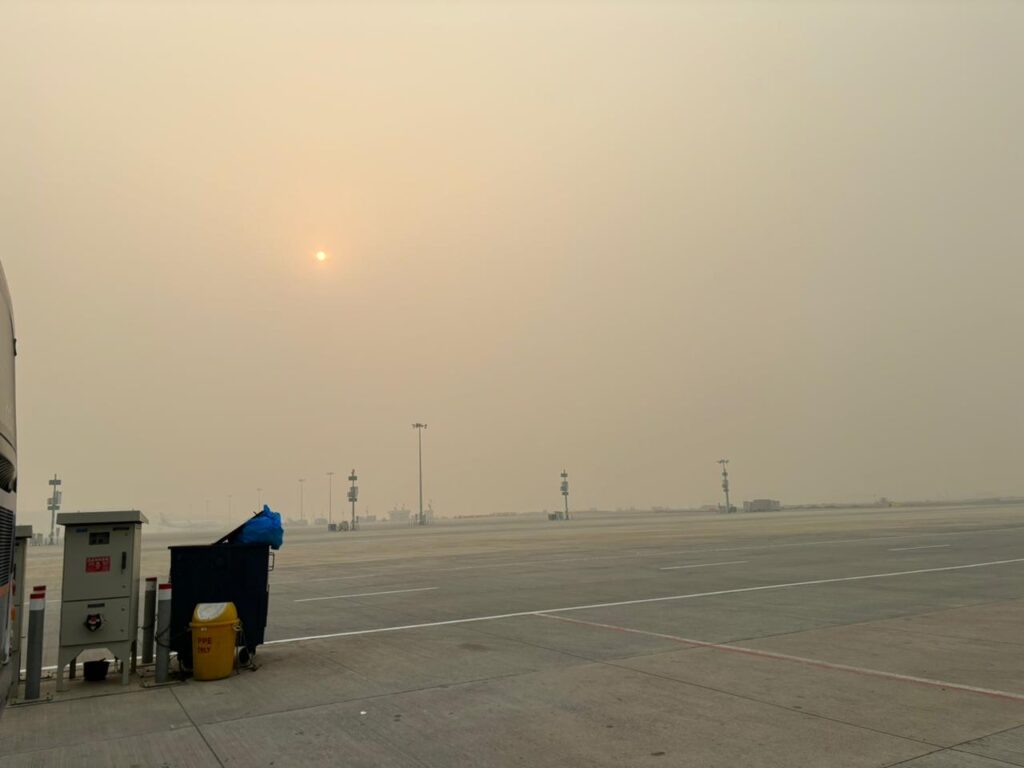
Delhi and fog are an old combination. But this winter, things seem to be getting worse. And with the Arjun Jaitley stadium being one of the 10 venues for the ongoing World Cup, international players are having a hard time dealing with the smog.
The parali [crop-stubble] burning in the neighbouring states, coupled with the onset of winter, has caused a hazardous atmosphere in Delhi. Usually the smog is at its worst before the sun rises and after the sun sets. But this time, even if you step outside your homes at 3 in the afternoon, there is a thick blanket of grey smoke covering the city.
Having lived in Delhi most of my life, the smog has only gotten worse over time. When you pop your head out of the window in the morning, you don’t feel a gush of fresh wind anymore. Instead, you are hit with a layer of toxic smoke. With the beginning of winter, you expect there to be a little fog, but with temperatures of around 28-30 degrees, the amount of smog is unacceptable. Even if you were to step outside in the afternoon, there’s a thick layer of toxins combined with unbearable heat and the blazing sun. It’s almost criminal.
Friends and family who have asthma or are suffering with illnesses are having an especially difficult time breathing. Senior citizens with already fragile bodies are afraid that the smoke just might make them ill. And it’s not just the smoke that’s causing a problem. It’s also the visibility. Driving a motor vehicle in the morning and at night is turning out to be a hazard for everyone. Combine that with the dozens of roadways projects that are ongoing in Delhi. One of the biggest projects, the Dwarka Expressway, had contributed to bad air quality even before there was any parali burning. And now there’s an incredibly toxic, hazardous combination of dust, ash, pollution and fog covering the entire city.
The smog is an inconvenience to the teams travelling here, to say the least. The Bangladesh cricket team is situated in Delhi at the moment for their next contest against Sri Lanka. On Friday, the team management had to call off their crucial practice session to safeguard the players from the pollution. It may be recalled that during an India-Sri Lanka Test in Delhi in 2017, several of the visiting players vomited and had to go off the field at various points, with the Air Quality Index (AQI) going well over 300 – anything over 150 is considered unhealthy.
Air pollution has crossed the “severe” mark in Delhi. Rohit Sharma, the Indian skipper, too has expressed his concerns over the rising pollution in cities. The English team, during their match against South Africa in Mumbai, also had their share of troubles with the air quality, with players being unable to perform their best on the field. During the match, players from both teams were struggling to catch their breath and returned with coughs.

“It just felt like you couldn’t get your breath,” said Joe Root. “It was unique.”
Ben Stokes, while in Bangalore, could be seen using inhalers to tackle the pollution while practicing. Other players too resorted to using inhalers that are commonly used by people suffering from asthma.





